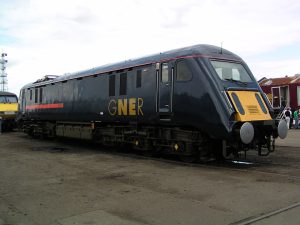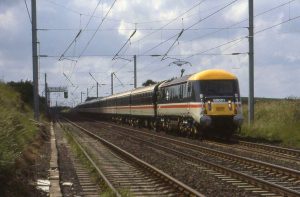Introduction
Railways have long been an integral part of the world’s transportation infrastructure, and the evolution of locomotives has played a crucial role in shaping the efficiency and speed of rail travel. Among the many classes of locomotives that have graced the tracks, the Class 89 stands out as a symbol of innovation, power, and reliability. This article explores the history, design, and legacy of the Class 89 locomotive, highlighting its impact on the railway industry.
The Genesis of the Class 89
The Class 89, a British Railways locomotive, was introduced in the 1950s as part of the ongoing effort to modernize and standardize the country’s rail fleet. The 89s were designed and built at the Doncaster Works, a major railway works facility in South Yorkshire, England. The primary objective was to create a powerful and versatile locomotive capable of handling both passenger and freight services with ease.
Design and Technical Features
The Class 89 was a robust and versatile electric locomotive that showcased cutting-edge engineering for its time. With a distinctive streamlined design, it exuded a sense of modernity that captured the spirit of the mid-20th century. The locomotive was equipped with a 25 kV AC electric traction system, allowing it to efficiently operate on electrified lines.
One of the notable technical features of the Class 89 was its powerful electric motors, which provided substantial tractive effort. This made the locomotive well-suited for hauling heavy freight trains and maintaining high speeds on passenger services. The combination of power and speed made the Class 89 a workhorse on the rails, contributing significantly to the efficiency of the rail network.
Operational History
The Class 89 entered service in the late 1950s and quickly established itself as a reliable and indispensable member of the British Rail fleet. Its operational domain included both passenger and freight services, showcasing the locomotive’s versatility. It was often deployed on key routes, where its high horsepower and efficient design allowed for swift and dependable transportation of goods and passengers.
The locomotive’s operational history was marked by its ability to navigate challenging terrains and varying track conditions. The Class 89 demonstrated exceptional performance on gradients and curves, making it a preferred choice for routes with diverse topography. This adaptability contributed to the locomotive’s longevity and sustained relevance in the rapidly evolving railway landscape.
Notable Achievements
The Class 89 achieved several milestones during its operational tenure. One of the most notable accomplishments was its role in setting speed records on electrified lines. The locomotive’s streamlined design and powerful motors facilitated high-speed travel, and it became a symbol of efficiency in the electrified traction era.
In addition to speed records, the Class 89 played a crucial role in enhancing the overall efficiency of the rail network. Its ability to handle heavy freight trains made it a valuable asset for transporting goods across long distances. The locomotive’s consistent and reliable performance contributed to the growth and development of industries that relied on the timely transportation of raw materials and finished products.
End of an Era
Despite its initial success and widespread use, the Class 89 faced challenges as the railway industry underwent significant changes. The transition to more modern and advanced locomotives, coupled with shifts in transportation paradigms, led to the gradual phasing out of the Class 89 from active service. The last of these locomotives were retired from regular operations in the late 1980s.
The retirement of the Class 89 marked the end of an era in railway history. However, many locomotives found a second life in preservation, with enthusiasts and heritage railways recognizing their historical significance. Several Class 89 locomotives have been meticulously preserved and restored to their former glory, allowing future generations to experience the power and elegance of these iconic machines.
Legacy and Preservation
The legacy of the Class 89 lives on through preservation efforts and the dedicated work of railway enthusiasts. Many preserved locomotives are showcased in museums and heritage railway centers, offering a glimpse into the technological advancements and design aesthetics of mid-20th-century rail travel.
Preservation initiatives also include the maintenance and operation of some Class 89 locomotives on heritage railway lines. These efforts provide an authentic and immersive experience for enthusiasts and the general public, allowing them to witness the sheer power and engineering prowess of these historic locomotives.
Conclusion
The Class 89, with its sleek design, powerful performance, and versatility, remains an enduring symbol of railway heritage. While the locomotive may no longer traverse the mainline tracks in active service, its legacy lives on through preservation efforts and the memories of those who witnessed its impressive feats on the railways. The Class 89 stands as a testament to the ingenuity of railway engineering in the mid-20th century and continues to captivate the imaginations of railway enthusiasts and historians alike. As we look toward the future of rail travel, it’s essential to recognize and celebrate the contributions of iconic locomotives like the Class 89 that have played a pivotal role in shaping the history of railways.








